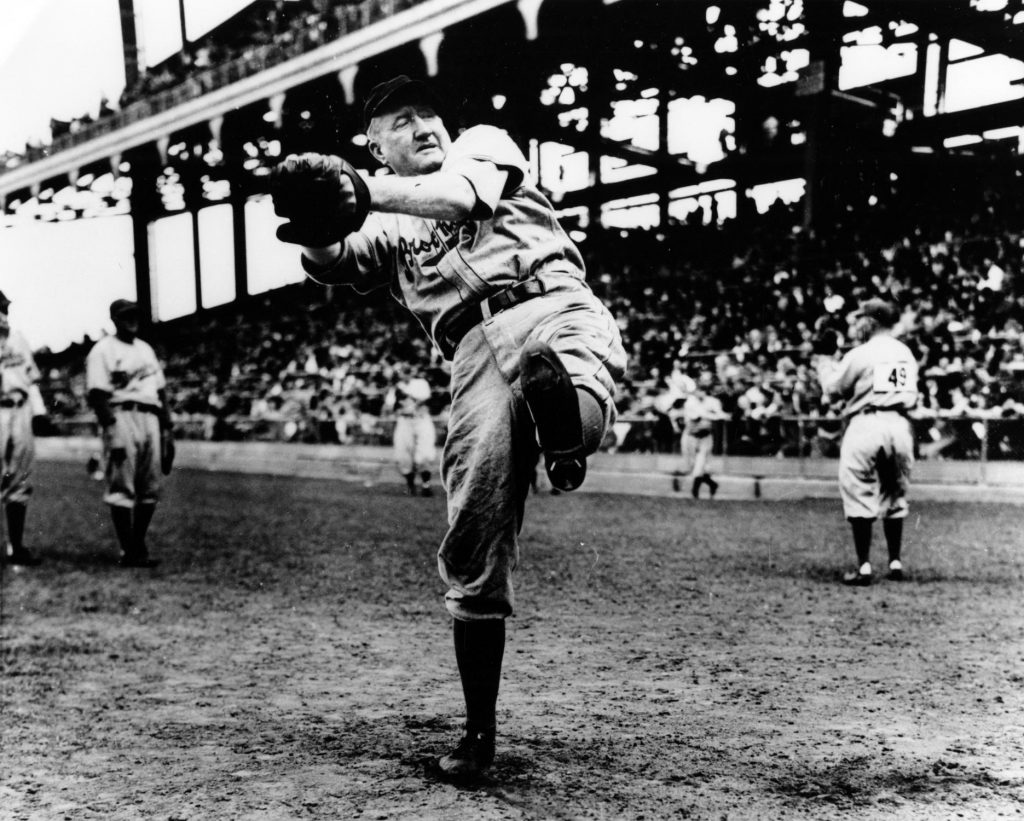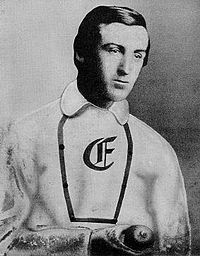
Dazzy Vance (National Baseball Hall of Fame Library)
Hi there! To get you warmed up for the May 1 release of Brothers in Arms: Koufax, Kershaw, and the Dodgers’ Extraordinary Pitching Tradition (pre-order now!), from time to time I want to share some behind-the-scenes tidbits about, for lack of a better phrase, “The Making of Brothers in Arms.” Think of these as if they were the DVD extras. Ideally, you’ll find them of interest even without the book in your hands.
One big revelation during my research for Brothers in Arms is that you can essentially pinpoint the birth of the Dodger pitching tradition near the end of World War II, for reasons that will become apparent in the book. Obviously, there were great pitchers in Brooklyn before the war, but what you realize is they arrived more out of the kind of scattershot management and blind luck that any franchise could have stumbled into. And indeed, the beloved Bums were stumblers for most of their first half-century of existence.
So for the book, that left behind a central dilemma: The pre-World War II pitchers aren’t really part of the Dodger pitching tradition, but you can’t tell the story of Dodger pitching without them. For example, if I had turned in Brothers in Arms without giving due attention to Dazzy Vance, the first player in the Hall of Fame with a Brooklyn cap on his plaque — and just a great story in his own right — that would have left a huge hole in the Brothers in Arms canvas.
The solution was the book’s 20-page prologue, “The Ancestors,” which tells the stories of all the key names in Dodger pitching from the beginnings of baseball in Brooklyn during the mid-1800s all the way through to the early 1940s — while also detailing the factors that made the Dodger pitching tradition something tangible, something that was a matter of design rather than happenstance.
Out of my desire to be comprehensive in chronicling Dodger arms of all ages, the book begins with a pitcher who wasn’t even a Dodger, a Bum, a Superba or a Bridegroom. Jim Creighton, to be clear, never pitched for the actual franchise that 100 years after his professional debut would become the Los Angeles Dodgers. But over three historic years from 1860-62, he was Brooklyn’s first pitching great — in fact, as I put it in the book, “arguably the sport’s first ace, teenage phenom, two-way star, and tragic legend all in one.”
From Creighton, “The Ancestors” flows into the names that any fan who has ever perused Dodger record books might have encountered. Adonis Terry, Bob Caruthers and Brickyard Kennedy. Ned Garvin, Kaiser Wilhelm and Nap Rucker. Jeff Pfeffer, Rube Marquard and Burleigh Grimes (who pitched before Vance but became a Hall of Famer after him).
Vance gets the star treatment in the prologue, as he should. To this day, you could easily say it is he, not Sandy Koufax, Don Drysdale or Don Sutton, who had the most outstanding career in franchise history — though Clayton Kershaw does have a chance to surpass him — all the more remarkable considering Vance didn’t win a game for the Dodgers until he was 31 years old. But read his story in the book, and then dare to tell me you’re not impressed. (Seriously, if you do that, I’ll know you’re reading both these preview posts and the book, which would be cool.)
Following Vance, two more Dodger pitchers — Van Lingle Mungo and Whit Wyatt — get singled out, though at this point of the prologue, the emphasis in the prologue turns more toward the arrival of executives Larry MacPhail and Branch Rickey, and a discussion of how they laid the organizational foundation for an actual emphasis on developing pitching talent. “With Rickey’s influence,” I write, “Dodger pitching was no longer dependent on wishing upon some stars. It had a focus, a philosophy—and a future.”





Comments are closed.